VOL.1 S T U D I O S ARTIFICIAL INTELLIGENCE BTECH 3RD YEAR UNIT 1 TO UNIT 5 35 PAGES
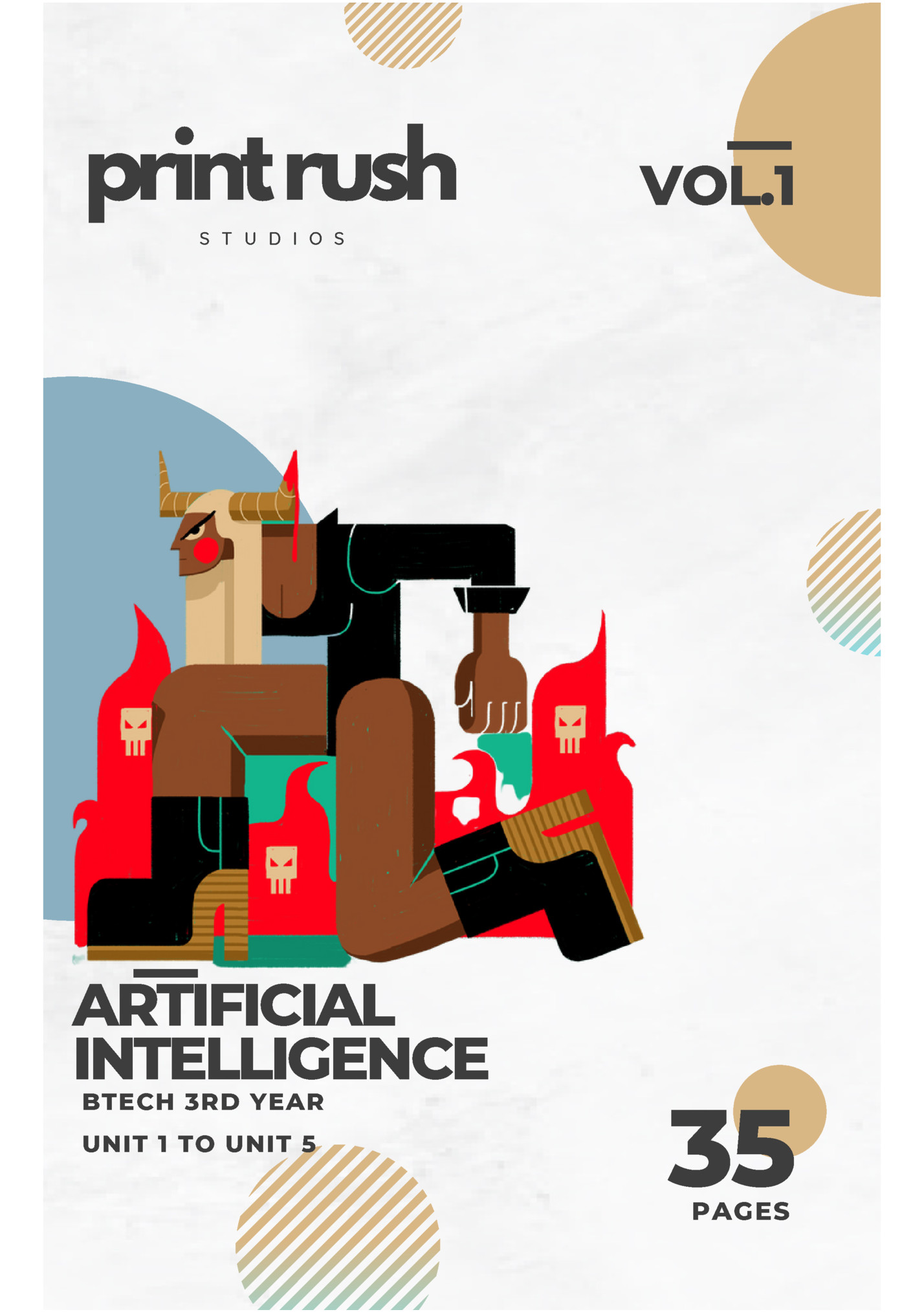
Artificial Intelligence/Unit-1 Unit-1 WHAT IS AI It is a field of computer science which focuses on the creation of intelligent machines capable of performing tasks that typically requires human intelligence. Task include :- Problem solving, Understanding language, pattern solving and decision making. But they do it through algorithms and data rather than human consciousness. Common uses :- Chatbot is virtual assistants, image and speech recognition, autonomous vehicles, fraud detection, medical diagnostic, language translation. NEED OF AI ● Efficiency ● Automation ● Data analysis ● Decision making ● Autonomous system ● Accessibility PRODUCTION SYSTEM It is the fundamental approach to represent knowledge and decision making in AI based on a set of rules about behavior and mechanism necessary to follow those rules. Components of Production System The major components of Production System in Artificial Intelligence are: 1. Global Database: It is the central data structure used by the production system in Artificial Intelligence. 2. Set of Production Rules: The production rules operate on the global database. Each rule usually has a precondition that is either satisfied or not by the global database. If the precondition is satisfied, the rule is usually applied. The application of the rule changes the database. 3. A Control System: The control system then chooses which applicable rule should be applied and ceases computation when a termination condition on the database is satisfied. If multiple rules are to fire at the same time, the control system resolves the conflicts. Classes of Production System 1.Monotonic Production System: ● Rules can be applied simultaneously. ● No rule's application prevents the involvement of another. 2.Partially Commutative Production System: 1
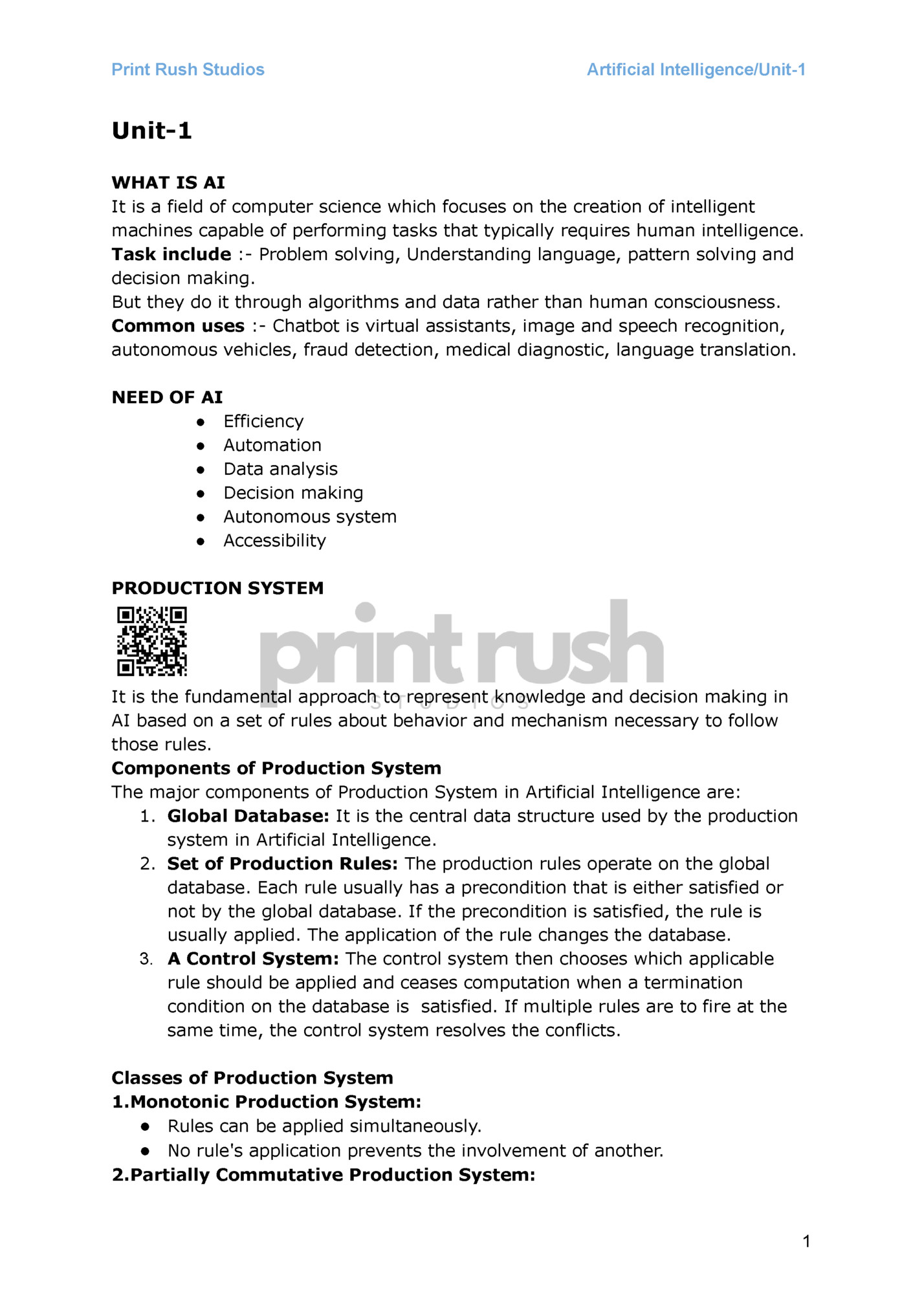
Artificial Intelligence/Unit-1 ● Results achieved by interchanging rule states. ● Multiple rule combinations can transform State A into State B. 3.Non-monotonic Production System: ● Increases efficiency; no backtracking needed. ● Corrects errors without revisiting previous moves. 4.Commutative System: ● Order of operation is unimportant. ● Suitable for reversible changes. 5.Partially Commutative Production System: ● Order of processes is crucial. ● Ideal for irreversible changes (e.g., chemical processes). Characteristics of a Production System 1. Simplicity: AI production rules, in 'IF-THEN' format, simplify real-world problem-solving. Unique structures enhance readability and understanding. 2. Modularity: Production rules are modular, allowing incremental improvement. Discrete parts aid performance by adjusting rule parameters without major output impact. 3. Modifiability: Rules are easily modifiable, accommodating iterative improvements based on gathered requirements and changing system needs. 4. Knowledge-intensive: Production systems use human language (e.g., English) in rule representation. Conclusions are drawn from plain English sentences, fostering productive outcomes. Disadvantages of a Production System 1. Opacity: Communication challenges between the rule interpreter and production rules hinder system understanding. The combined operation impact and hierarchy complexities contribute to this issue. 2. Inefficiency: Multiple rules with varying effectiveness lead to exhaustive searches in each cycle, reducing the production system's efficiency. 3. Inability to Learn: Basic rule-based systems lack the capability to learn from experience, limiting adaptability compared to advanced AI systems. 4. Conflict Resolution: Triggering multiple rules for a condition requires efficient conflict resolution, posing challenges to the production system's efficiency. BFS ( Breadth First Search): 2
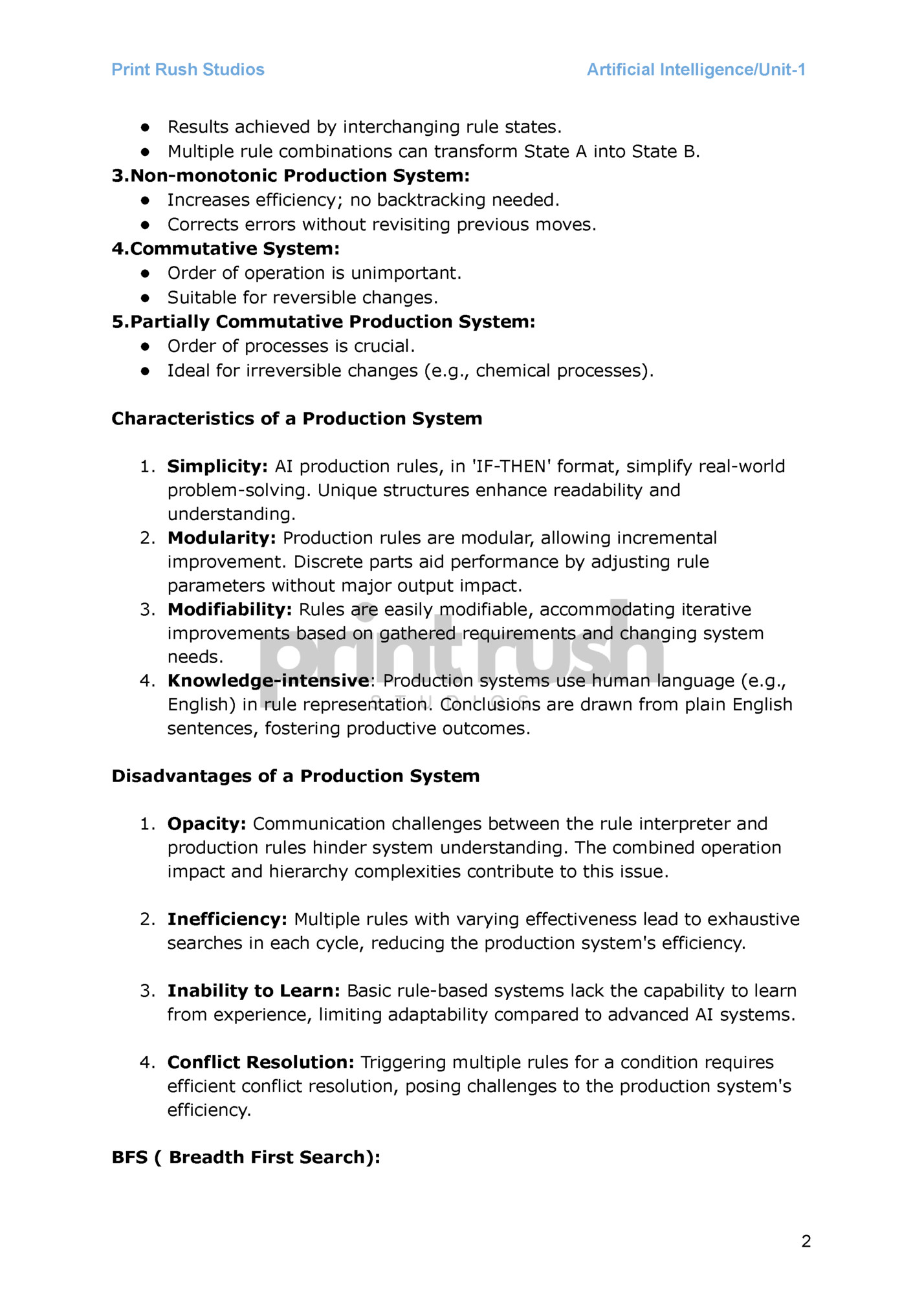
Artificial Intelligence/Unit-1 It is uninformed search technique that uses queue and works on FIFO[first in first out] principle. Here we start searching of shallowest node. Step1: Initially queue and visited arrays are empty. Time Complexity: O(bd) Queue and visited arrays are empty initially. Step2: Push node 0 into queue and mark it visited. Step 3: Remove node 0 from the front of queue and visit the unvisited neighbours and push them into queue. Step 4: Remove node 1 from the front of queue and visit the unvisited neighbours and push them into queue. Repeat this process until all the nodes are visited. 3

Artificial Intelligence/Unit-1 DFS (Depth First Search): Uninformed search technique which uses stack that works on principle off lifo( last in first out). Here we visit deepest node first. It is non optimal and may not give complete answer always. Time Complexity: O(bd) Example: Consider graph given below: 1. We start from vertex 0, the DFS algorithm starts by putting it in the Visited list and putting all its adjacent vertices in the stack. Visit the element and put it in the visited list Next, we visit the element at the top of stack i.e. 1 and go to its adjacent nodes. Since 0 has already been visited, we visit 2 instead. Repeat this process. 4
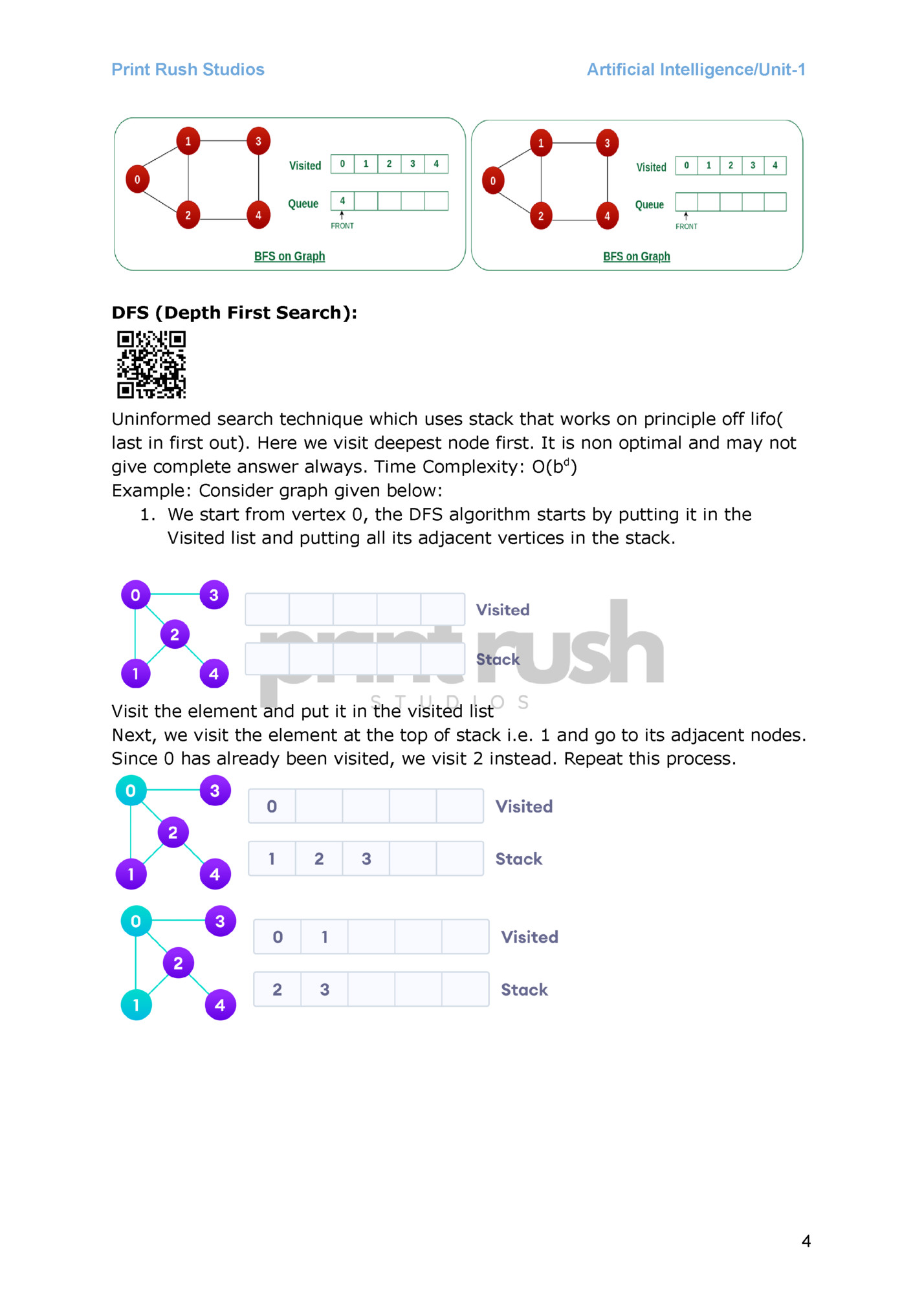
Artificial Intelligence/Unit-1 After we visit the last element 3, it doesn't have any unvisited adjacent nodes, so we have completed the Depth First Traversal of the graph. ➔ DIFFERENCE BETWEEN BFS & DFS Types of Searches: 5
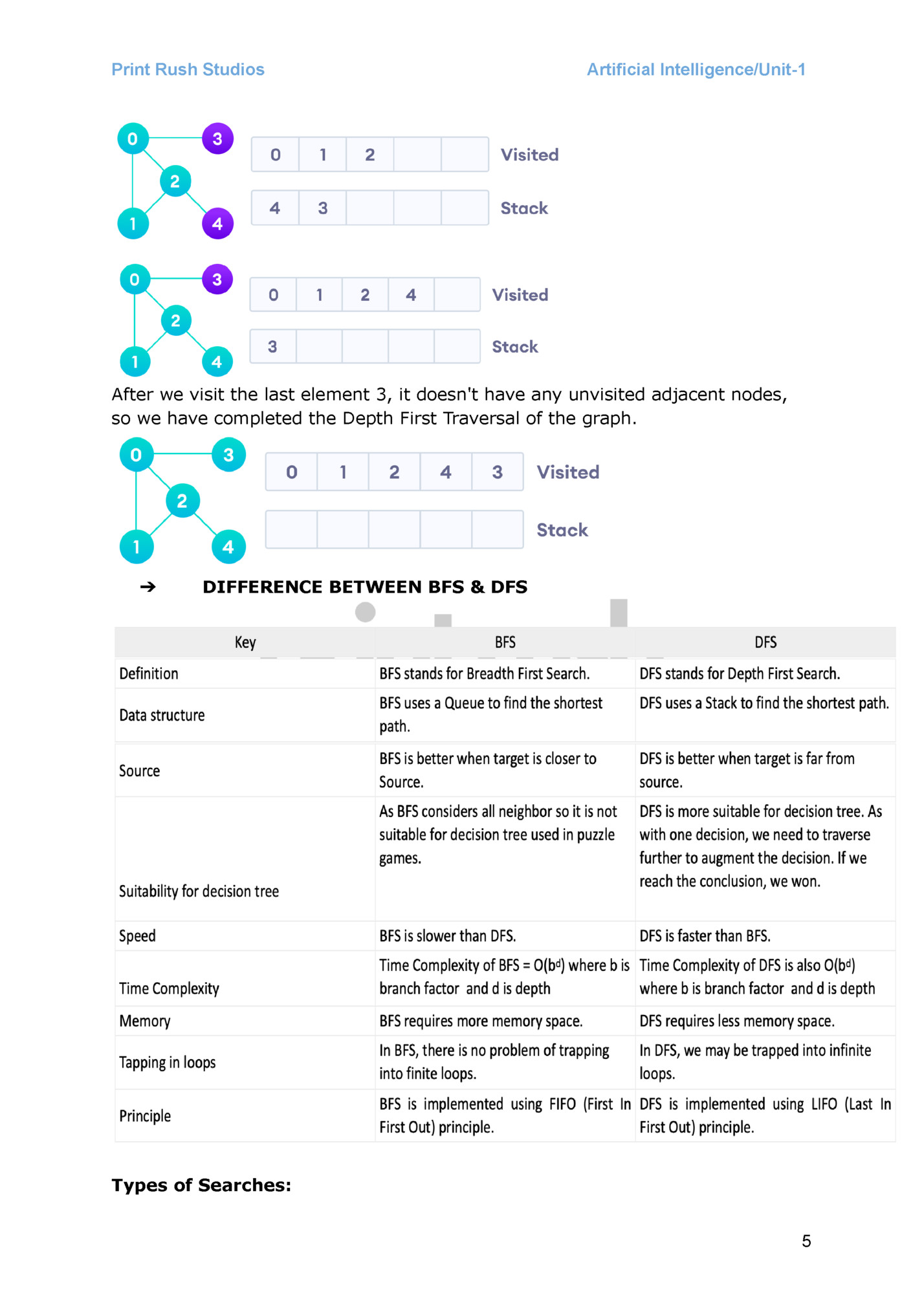
Artificial Intelligence/Unit-1 6
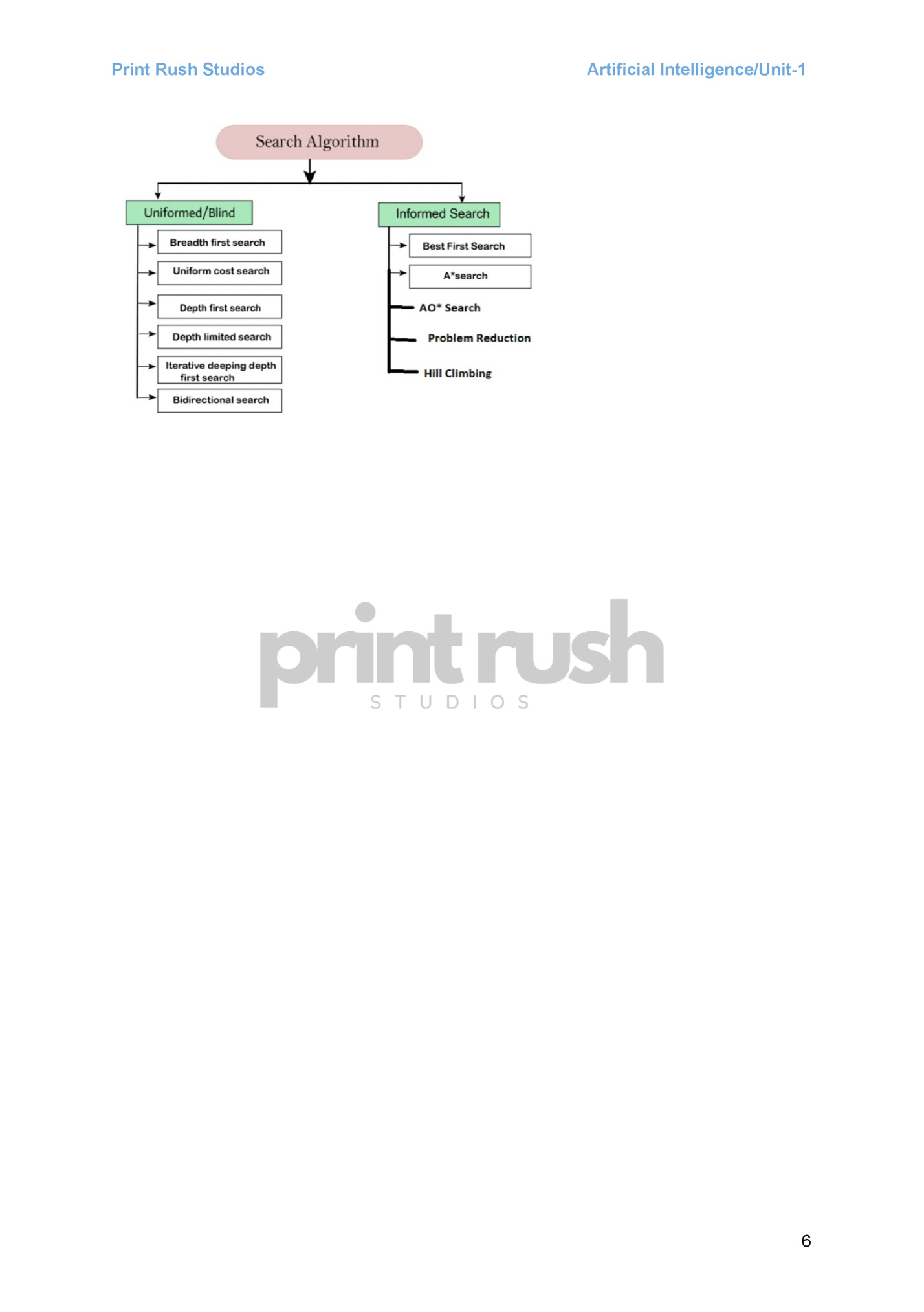
Artificial Intelligence/Unit-1 To Access The Complete Printed Module, Delivered To The Comfort Of Your Homes Visit The Link -https://www.printrushstudios.online/purchase-modules https://wa.me/message/6TYFOEZULHEOI1 Or Whatsapp Us at - +91 92445 78723 For Single Module Any 1 Subject All Units Covered - ₹99 For Bundle Of All Subjects Covered Including Electives - ₹299 Orders Dispatching From Monday Onwards. 7

Fleepit Digital © 2021